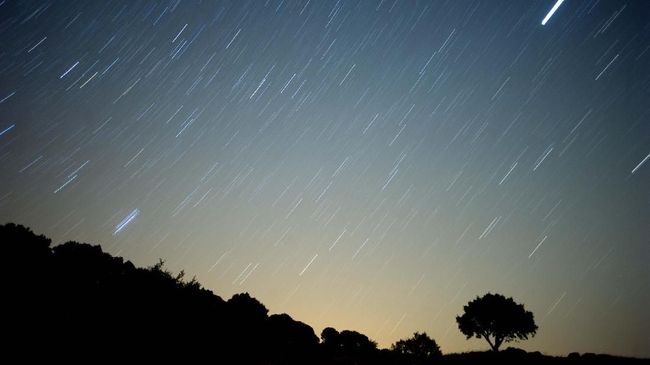CNN Indonesia
Thursday, 16 Nov 2023 17:41 IWST
Jakarta, CNN Indonesia —
Leonid meteor shower will reach its peak soon view in the form of 15 ‘shooting stars’ per hour. Check out the complete schedule.
According to American Meteor Societythis annual meteor shower, whose name is taken from the constellation Leo, will occur when the moon phase reaches 23 percent, aka the crescent moon.
This will make the sky dark, even though a clear sky is needed to see the meteor. A location with as little light pollution as possible will be a bonus.
Leonid actually started being active from November 3 to December 2.
Collect LiveSciencethese ‘shooting stars’ are actually meteoroids, small particles that hit the Earth’s atmosphere, then heat up and evaporate and then release energy that is visible as a streak of light in the night sky.
These particles usually come from comets that cross the Earth’s orbit around the Sun.
The source of the Leonids itself comes from a small comet called 55P/Tempel-Tuttle, which visits the inner solar system every 33 years. NASA revealed that the last visit was recorded in 1998 and is expected to occur again in 2031.
NASA also said that meteors from the Leonid meteor shower had the highest speed, traveling at 44 miles per second (71 kilometers per second).
This speed is too fast to be seen through a telescope. However, a pair of stargazing binoculars can help improve the observer’s view.
Although shooting stars can appear anywhere in the night sky, it makes sense for observers to monitor the direction where the meteor originates, namely the constellation Leo.
For the peak time for meteor showers in Indonesia, the Jakarta Planetarium revealed that the moment will occur on Friday (17/11) and Saturday (18/11) at 00.21 WIB to 05.00 WIB.
“The peak of the Leonid Meteor Shower will occur on 17-18 November 2023. This meteor shower can be observed from 6-30 November 2023 at midnight until just before sunrise,” according to the Planetarium statement.
Just pray that it doesn’t rain or that the sky is clear enough to see this celestial phenomenon.
Significant meteor shower
Despite its relatively low frequency of meteor occurrence, the Leonids are classified as a significant meteor shower due to its ‘fireballs’ (very bright meteors) and ‘Earth meteors’ (those that streak close to the horizon).
In addition, the meteor shower occasionally produces significant meteor showers.
Every 33 years or so, the Leonid meteor shower produces at least 1,000 meteors per hour. In the 1966 event, there was a 15-minute period when so many meteors were visible that they appeared to fall like rain.
However, the most recent Leonid meteor storm occurred in 2002 so the next storm will not occur until 2035.
(rfi/arh)
2023-11-16 10:41:11
#Leonid #Meteor #Shower #Reaches #Peak #Starting #Tonight #Check #Schedule


